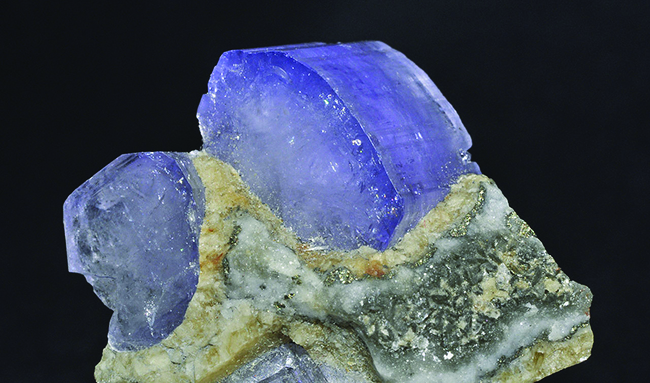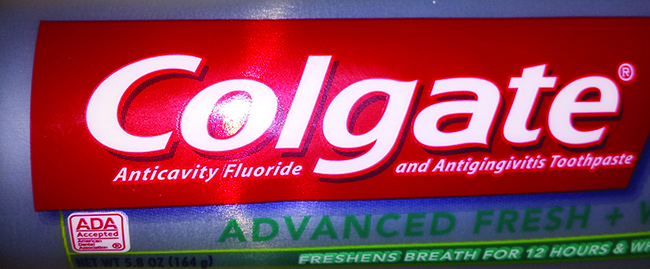| << Chapter < Page | Chapter >> Page > |

When exposed to acid, phosphate ions react with hydronium ions to form hydrogen phosphate ions and ultimately, phosphoric acid:
Hydroxide ion reacts to form water:
These reactions decrease the phosphate and hydroxide ion concentrations, and additional hydroxylapatite dissolves in an acidic solution in accord with Le Châtelier’s principle. Our teeth develop cavities when acid waste produced by bacteria growing on them causes the hydroxylapatite of the enamel to dissolve. Fluoride toothpastes contain sodium fluoride, NaF, or stannous fluoride [more properly named tin(II) fluoride], SnF 2 . They function by replacing the OH – ion in hydroxylapatite with F – ion, producing fluorapatite, Ca 5 (PO 4 ) 3 F:
The resulting Ca 5 (PO 4 ) 3 F is slightly less soluble than Ca 5 (PO 4 ) 3 OH, and F – is a weaker base than OH – . Both of these factors make the fluorapatite more resistant to attack by acids than hydroxylapatite. See the Chemistry in Everyday Life feature on the role of fluoride in preventing tooth decay for more information.
As we saw previously, fluoride ions help protect our teeth by reacting with hydroxylapatite to form fluorapatite, Ca 5 (PO 4 ) 3 F. Since it lacks a hydroxide ion, fluorapatite is more resistant to attacks by acids in our mouths and is thus less soluble, protecting our teeth. Scientists discovered that naturally fluorinated water could be beneficial to your teeth, and so it became common practice to add fluoride to drinking water. Toothpastes and mouthwashes also contain amounts of fluoride ( [link] ).

Unfortunately, excess fluoride can negate its advantages. Natural sources of drinking water in various parts of the world have varying concentrations of fluoride, and places where that concentration is high are prone to certain health risks when there is no other source of drinking water. The most serious side effect of excess fluoride is the bone disease, skeletal fluorosis. When excess fluoride is in the body, it can cause the joints to stiffen and the bones to thicken. It can severely impact mobility and can negatively affect the thyroid gland. Skeletal fluorosis is a condition that over 2.7 million people suffer from across the world. So while fluoride can protect our teeth from decay, the US Environmental Protection Agency sets a maximum level of 4 ppm (4 mg/L) of fluoride in drinking water in the US. Fluoride levels in water are not regulated in all countries, so fluorosis is a problem in areas with high levels of fluoride in the groundwater.
When acid rain attacks limestone or marble, which are calcium carbonates, a reaction occurs that is similar to the acid attack on hydroxylapatite. The hydronium ion from the acid rain combines with the carbonate ion from calcium carbonates and forms the hydrogen carbonate ion, a weak acid:

Notification Switch
Would you like to follow the 'Chemistry' conversation and receive update notifications?